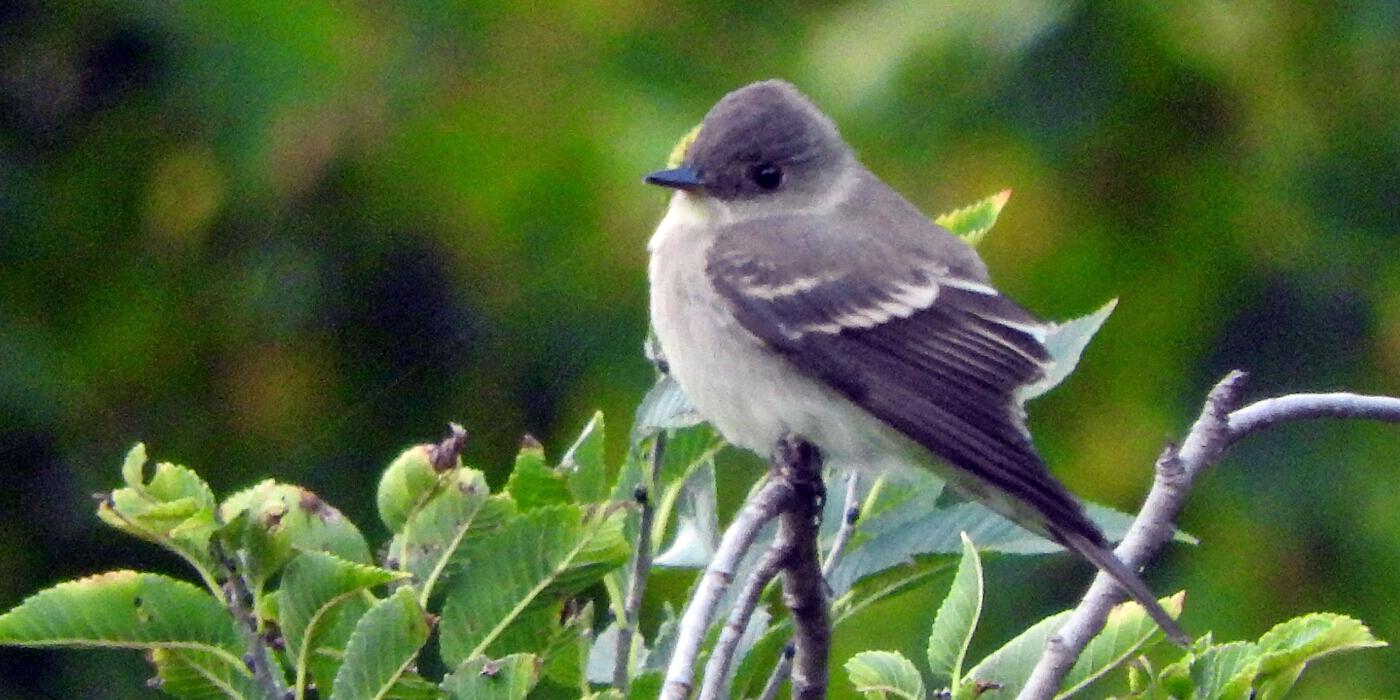Better Late than Never…
Eastern Wood-Pewee
Practically all of the birds have arrived from their migration and spring is in full swing when the eastern wood-pewee decides to grace us with its presence.
Greeting us with its tranquil whistle delivered as calmly as the pace of its northward journey, it takes its own sweet time singing "pee-ah-wee!". This serene song can be heard well into August, when other birds have fallen silent. Though this bird sings throughout the day, listen for its ballads before dawn's light and well after sunset when this activity peaks.
Aside from its long-drawn, melodious soliloquy, it is perhaps otherwise known for what it does best…catching flies. The eastern wood-pewee perches near the canopy, on a dead branch, sallying after small flying insects and returning to the same perch only to repeat this act time and time again.
Its diet consists almost exclusively of flying insects, save for the occasional dogwood seed and elder, black, or poke-berry. Foraging habits during winter and migration do not seem to vary from the breeding season dashes for insects.
This Neotropical migrant is commonly found in eastern deciduous forest, one of its preferred breeding habitats. Other breeding habitats include open pine woodlands in the South, riparian zones in the Midwest, and northern hardwood-coniferous forests.
The nest appears unusually small compared to the bird's size. An open-cup made of woven-grass is bound to the bark of a horizontal limb, well out from the trunk, 5-20 m above the ground and patched with lichens to camouflage its appearance. It generally lays 3 milky-white to creamy colored eggs. Speckles ranging from browns to purples wrap around like a wreath on the larger end of the matte-finished egg.
Like its nest, the eastern wood-pewee is quite inconspicuous. Perched in the canopy, high above in thick foliage, the small, olive-gray, obscurely marked flycatcher, when silent, may easily be mistaken for a eastern phoebe or olive-sided flycatcher.
It is almost identical to the western wood-pewee and they were previously considered conspecific. They are best separated by differences in range and their songs. Some characteristics to aid in identification may be its triangular head, grayish-olive upperparts, an olive-washed breast and wing bars.
It has a dark brown to black bill which is orange-yellow at the base of the lower mandible. The throat, as well as the belly and undertail coverts are whitish. And, of course, the unmistakable song that gives it its name, provides the definitive clue.
The migration route follows primarily from its wintering grounds in Central and South America (from central Costa Rica and Panama to Colombia and Venezuela, Peru, Bolivia, and Amazonian Brazil), through Central America, along Mexico's Gulf coast and up into the eastern and central United States. In the fall, some birds may follow a Caribbean route, passing through the Bahamas, Cuba, Jamaica and the Lesser Antilles.
The eastern wood-pewee is still considered common throughout much of its range, though according to the Breeding Bird Survey results, the its population declined from 1966-1991 by a staggering 35.6%. This is attributed most to habitat degradation on both the breeding and wintering grounds. In the U.S., declines may be in part due to over-browsing by high populations of white-tailed deer.
Much more remains to be learned about the pewee's specific habits and everyday behavior. Due to the pewee's inconspicuous nature, little research has been done on its reproductive behavior, ecology, and wintering biology. Additional studies would be very useful in establishing much needed current information and in ensuring the future posterity of this leisurely lamenter.
Song recorded by John R. Sauer, USGS Patuxent Wildlife Research Center
